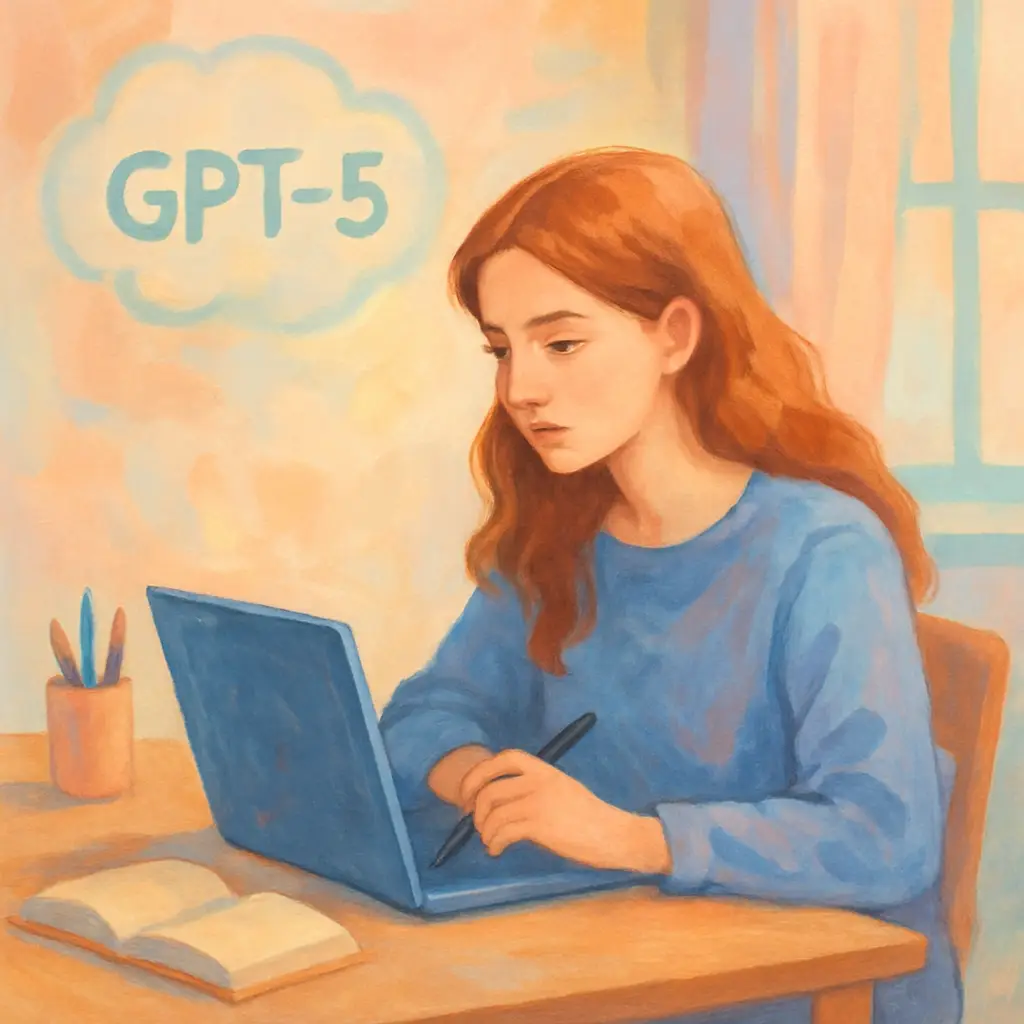
Simply explained GPT-5 Prompting
Table of Contents
- Introduction
- Understanding GPT-5 and Its Evolution
- Core Principles of Effective Prompting
- High-Impact Prompting Techniques
- Advanced Strategies and Agentic Tasks
- Real-World Applications and Domain-Specific Prompts
- Optimizing Prompting Workflows
- Troubleshooting and Best Practices
- Conclusion: Embracing the Art and Science of Prompting
- Frequently Asked Questions (FAQs)
Introduction
In the fast-evolving world of artificial intelligence, staying ahead of trends means understanding the tools that shape our technological future. GPT-5, OpenAI’s flagship model, represents a giant leap in natural language processing and computational intelligence. When it comes to leveraging GPT-5’s exceptional abilities, one key skill is mastering the art of prompting. This article delves into the GPT-5 prompting guide, offering you an in-depth view of best practices, advanced strategies, and practical insights to maximize the performance of this cutting-edge model.
The journey to effective prompting is both an art and a science. It requires a keen understanding of the model's architecture, a sharp eye for detail in structuring queries, and a willingness to experiment with different approaches. In this detailed guide, we will walk through the evolution of GPT-5, break down core prompting principles, introduce high-impact techniques, and explore the nuances of advanced strategies tailored for creative, technical, and analytical tasks. Let's embark on this journey of discovery and unlock the full potential of GPT-5.
Generate Veo 3 JSON, Fast
Create structured, optimized JSON for Veo 3 in minutes. Clear fields. Correct syntax. Consistent results.
Open Veo 3 JSON GeneratorUnderstanding GPT-5 and Its Evolution
GPT-5 is a culmination of years of research and development in natural language processing. Building on its predecessors, GPT-5 brings several key enhancements that empower users to achieve remarkable outputs.
The Leap from Previous Models
GPT-5's evolution can be summarized in the following advancements:
- Stronger Contextual Understanding: With the ability to digest and retain sophisticated instructions over extended conversations, GPT-5 ensures that even intricate tasks are managed with precision.
- Agentic Task Management: The model now has enhanced autonomy in managing multi-step tasks. It is designed to execute a chain of thought in a way that mimics human problem-solving.
- Improved Code Reasoning: Developers have witnessed significant improvements in the model’s ability to understand and generate code. GPT-5 now provides more reliable outputs for coding inquiries.
- Enhanced Steerability: The control provided over the model’s tone and style is more nuanced. Users can easily tailor outputs—be it formal, conversational, or creative—by providing clear instructions.
- Multi-Modal Capabilities: GPT-5 goes beyond plain text by accepting and processing multiple forms of input, making it a versatile tool in various scenarios.
These improvements not only heighten the model's performance but also offer new dimensions for user interaction. Recognizing these advancements is the first step towards effective prompt engineering.
A Brief Look at the History
Prior generations, such as GPT-3 and GPT-4, laid the groundwork for sophisticated language models by demonstrating that large-scale training on diverse datasets leads to versatile language understanding. However, GPT-5 builds upon that foundation with iterative improvements. Even complex queries and ambiguous instructions—once challenging for earlier models—are now handled more adeptly, reducing the need for overly prescriptive prompt engineering.
The evolving capabilities of GPT-5 illustrate how far we have come. From generating creative fiction to solving technical problems, the new model represents a blend of advanced computational prowess and refined interactive capabilities. Its ability to learn from context, adapt to diverse scenarios, and reason through layered queries sets it apart from earlier iterations.
Core Principles of Effective Prompting
Mastering GPT-5 begins with understanding the core principles of effective prompting. These principles serve as a blueprint for constructing queries that yield the desired results consistently. Let’s explore these foundational ideas.
1. Clarity and Specificity
One of the most significant steps in crafting a great prompt is to be clear and specific. Ambiguity naturally leads to unexpected outputs. When instructing GPT-5:
- Define the task explicitly: Write down what you wish to accomplish. Whether it’s summarizing an article or generating a creative story, clarity is critical.
- Set explicit boundaries: Define formats, expected word counts, or output structures. For instance, if you need a markdown table, be sure to mention it explicitly.
Consider the following example:
You are a seasoned technical analyst. Please review the following code snippet and provide a detailed explanation of its functionality in bullet points, ensuring that your answer includes sample outputs.
By structuring the prompt with clear roles, tasks, and constraints, you pave the way for GPT-5 to meet your expectations.
2. Iterative Experimentation
Effective prompting is rarely achieved at the first attempt. Experimentation is key:
- Tweak, test, and adjust: Every minor change in phrasing can lead to a different output. It’s important to modify your instructions incrementally.
- Observe response patterns: Note how changes in structure or detail affect results. This iterative process helps refine what works best.
- Record successful templates: Over time, logging effective prompts makes it easier to replicate success in future tasks.
Early iterations might seem trial-and-error, but the insights you gain through experimentation are invaluable. By gradually honing the phrasing and structure of your prompts, you can significantly enhance the overall performance of GPT-5.
3. Context and Role Assignment
Context is the backbone of achieving successful outputs from GPT-5. Providing sufficient context helps the model understand nuances and ensures that the generated content aligns with your requirements.
- Set roles and personas: Assigning a role or perspective to the model (e.g., “You are a professional resume reviewer”) aids in guiding the tone and style of the response.
- Provide background information: The more context you provide—whether it’s historical data, sample outputs, or situational context—the better GPT-5 can respond to your inquiry.
An example prompt might look like this:
You are an experienced product manager. Please analyze the following product description and offer a revised version that includes actionable suggestions for market improvement.
Using clear role assignments not only enhances clarity but also primes GPT-5 for producing more accurate and contextually rich responses.
4. Output Constraints and Formatting
The output format is as critical as the content. Constraints ensure that the output is structured, readable, and meets the requirements of the task.
- Define structure upfront: Specify whether you need a list, a markdown table, code blocks, or simple paragraphs.
- Enforce word limits and style guidelines: In scenarios where brevity or detailed explanation is required, setting a word limit or style can dramatically improve output quality.
For example:
You are a data analyst. Provide a summary of the following dataset in a table. The table should include columns for the metric name, value, and trend. Limit your response to 150 words.
Such constraints help tailor GPT-5's responses to be both comprehensible and task-specific.
High-Impact Prompting Techniques
Now that the core principles are in place, let’s dive into some high-impact prompting techniques that can greatly enhance your interaction with GPT-5. These methods range from creating clear instructions to constructing multi-layered queries that tap into the model’s advanced capabilities.
1. Clear Instructional Techniques
When crafting your prompts, clarity is your best friend. Here are some approaches to ensure your directives are easily understood:
a. Bullet Points and Lists
Breaking down information into bullet points or numbered lists can improve readability and help GPT-5 parse instructions effectively. For example:
You are a market analyst with expertise in consumer behavior. Please:
1. Summarize the key points of this report.
2. List the primary consumer trends mentioned.
3. Suggest one actionable insight for improving sales performance.
Using numbered steps makes multi-stage tasks easier to follow and ensures no component of the request is overlooked.
b. Role-Playing for Better Accuracy
Roles play a crucial part in guiding the model’s perspective. Assigning a role can help determine the tone and specificity of the content. Consider:
You are an expert coding instructor. Explain the following code snippet, highlighting potential pitfalls and improvements. Write your answer in markdown format with inline code segments.
Defining the role helps GPT-5 tailor its language more appropriately for the given context.
c. Concise Code Block Formatting
When working with code snippets, proper markdown formatting is a must. Always enclose code within triple backticks to ensure neat and error-free presentation:
def fibonacci(n):
if n <= 0:
return []
sequence = [0, 1]
while len(sequence) < n:
sequence.append(sequence[-1] + sequence[-2])
return sequence
Proper code formatting not only improves readability but also minimizes the risk of syntax misinterpretation.
2. Exemplars and Few-Shot Learning
One of the most effective methods for guiding GPT-5 is through exemplars—providing it with examples to mimic. This process, often called few-shot learning, involves presenting sample Q&A pairs within your prompt.
Consider the following approach:
You are a creative writer. Below are examples of engaging story introductions:
Example 1:
"Under the silent gaze of the moon, the ancient forest whispered secrets of forgotten times..."
Example 2:
"In a city that never slept, every alleyway spun tales of love, loss, and relentless ambition..."
Now, write your own engaging story beginning in a similar style.
This method not only sets a clear expectation but also enables GPT-5 to learn from the examples provided.
3. Multi-Stage Prompting for Complex Tasks
Some tasks require breaking down into multiple stages. This is particularly useful when dealing with complex topics or when an iterative approach is necessary. Multi-stage prompting can involve asking GPT-5 to first outline and then elaborate on the key points of a task.
For instance:
Step 1: Provide an outline of the main points required for a product review of a new tech gadget.
Step 2: Elaborate on each point with at least one paragraph of detailed commentary.
Step 3: Summarize the review with a concluding paragraph that offers final recommendations.
This systematic approach helps GPT-5 process large amounts of information in manageable chunks, leading to coherent and comprehensive outputs.
4. Dynamic Scaling with Context Inclusion
As the complexity of the task increases, so does the importance of including relevant context. In scenarios where background information is critical, always add a context block.
For example:
You are a data scientist. Below is a summary of our latest quarterly sales data for multiple regions. Using this information:
- Identify key trends in performance.
- Highlight regions with significant changes.
- Provide actionable insights in a markdown table.
Context:
Dataset details: regional sales numbers, market conditions, seasonal variations.
This method provides GPT-5 with all the necessary context needed to generate an accurate and insightful analysis.
Advanced Strategies and Agentic Tasks
Beyond the foundational techniques, advanced strategies can elevate your prompting game. GPT-5 is designed to handle agentic tasks, where it can process multi-step instructions, self-correct, and even access external information if directed.
1. Breaking Down Multi-Step Processes
For tasks that require several steps, consider building your prompt to include clearly defined stages or checkpoints.
You are a project manager. Outline a plan to integrate a new feature into an existing mobile app:
Step 1: Identify the core requirements.
Step 2: Break down the tasks into phases.
Step 3: Suggest a timeline and resource allocation.
Step 4: Highlight potential risks and propose mitigation strategies.
By guiding the model through each step, you ensure that every aspect of the task gets addressed systematically.
2. Employing Chain-of-Thought Prompts
Chain-of-thought prompting encourages the model to provide reasoning behind its responses. This method can be especially beneficial when dealing with complex problem-solving tasks.
Consider this example:
You are a strategic consultant. Analyze the negative impact of a sudden market shift on our business. Begin by listing potential causes, then reason through their impact step-by-step before suggesting corrective actions.
Requesting a “chain-of-thought” not only elicits a detailed explanation but also enables you to track the logic behind the final recommendations.
3. Self-Correction and Iterative Prompts
Sometimes, the first response may not be perfect. GPT-5’s capability for self-correction allows you to instruct it to refine its own output.
You are a technical writer. Draft a user guide for installing a software update. After your initial draft, review the content critically and update any sections that may appear ambiguous or overly technical.
This method forces iteration. GPT-5 can be nudged to re-examine its work, thereby enhancing clarity and accuracy in the final output.
4. Leveraging External Tools and API Integration
GPT-5’s innovative design allows it to leverage external tools or API calls where necessary. While this might be part of expert integrations, it is worth knowing that you can instruct GPT-5 to structure queries that involve external data retrieval.
For instance, you might say:
You are a business analyst. Query the external API for the latest financial news. Summarize the top headlines in a markdown formatted table, indicating the publication date and relevance.
Though actual integration requires proper API handling, formulating prompts for such scenarios helps in designing robust automation systems.
Real-World Applications and Domain-Specific Prompts
The versatility of GPT-5 makes it an invaluable asset across various industries. Let’s explore how prompt engineering can be tailored for specific domains, from technical coding tasks to creative endeavors.
1. Technical and Coding Tasks
Developers and data scientists often rely on GPT-5 to assist with code generation, debugging, or even documentation. When addressing technical queries:
- Use explicit code snippets: Always include code in triple backticks so that the model understands the context.
- State programming language or framework: For improved accuracy, specify the language or version.
- Include sample outputs: If you expect a particular format or sample result, providing an example can help guide the model.
Example prompt:
You are an expert Python developer. Analyze the following function to optimize its performance and reduce its runtime complexity. Provide your explanation along with modified code if necessary.
Code:
def process_data(data):
result = []
for item in data:
if item not in result:
result.append(item)
return result
The above prompt clearly outlines the task and includes both code and context, resulting in a more actionable output from GPT-5.
2. Creative Writing and Content Generation
For creative tasks such as writing stories, composing poems, or generating marketing copy, the flexibility of GPT-5 can be fully exploited by customizing the tonal and stylistic directions.
A sample creative prompt might be:
You are a creative writer with a flair for dramatic storytelling. Write an engaging short story set in a futuristic city where technology and nature intertwine. The story should evoke mystery and wonder, using vivid descriptions and a first-person perspective.
This type of prompt not only sets the scene but also steers the tone, ensuring that the writing style resonates with the intended audience.
3. Data Analysis and Report Generation
In analytical tasks, clarity and structured output are critical. Data analysts can use GPT-5 to summarize findings, generate insights, or even create reports.
Here’s an example prompt:
You are a data analyst. Given the quarterly data for our sales performance across multiple regions, generate a detailed report in markdown format. The report should include:
- An overview of key trends
- A section on region-wise performance
- Actionable recommendations for low-performing regions
Include relevant markdown tables and bullet points.
Ensuring that your prompts are systematically divided into sections helps GPT-5 to generate well-organized and comprehensive reports.
Optimizing Prompting Workflows
Efficient prompting is not just about a single, well-crafted query—it’s about building a workflow that refines and enhances your interaction with GPT-5. Here are some strategies to optimize your overall workflow.
1. Establishing a Template Approach
Templates can save time and ensure consistency across multiple queries. Over time, by accumulating effective prompt templates, you can quickly deploy them for a variety of tasks.
For example, you might maintain a document with templates like:
Template for Code Review:
- Role: You are a code reviewer.
- Task: Evaluate the efficiency of the following code.
- Code:
<insert code snippet>
- Expected Output: Provide at least three improvements with explanations.
By having such templates at hand, you can ensure that crucial aspects of the prompt are never overlooked.
2. Logging and Comparing Outputs
Keeping a log of your prompts and the resulting outputs is an excellent practice. When you note down which phrases work best and which require adjustments, you build up a knowledge base that improves future prompt design.
Imagine a system where every prompt is recorded along with meta information like task type, model response quality, and notes on how the prompt was refined. Over time, this log will help you decipher patterns and settle on the most effective prompting strategies.
3. Tools and Software for Prompt Optimization
The growing ecosystem around GPT-5 includes tools specifically designed to evaluate and improve prompt performance. Tools that simulate multiple responses, calculate consistency, and offer suggestions can be integrated into your workflow.
For instance, some platforms might let you run A/B tests with slight prompt alterations to determine which format yields the best results. Leveraging these tools not only saves time but also enhances the reliability of your outputs.
4. Automation and Continuous Feedback
Integrating a feedback loop in your workflow can transform how you interact with GPT-5. After each task, review the quality of the output and, if necessary, re-run the prompt with modified instructions. This continuous improvement process fosters a deeper understanding of how GPT-5 interprets queries and allows for rapid iterations.
Setting up a feedback mechanism where human reviewers validate outputs before further processing can enhance reliability, especially in critical business or creative scenarios.
Troubleshooting and Best Practices
Even the best-laid prompts can sometimes lead to unexpected results. This section provides troubleshooting tips and outlines best practices to help you refine your prompting techniques.
1. Addressing Ambiguity
Ambiguous prompts are often the root cause of confusing outputs. If you encounter vague or off-topic responses:
- Re-read the instruction to see if it can be further detailed.
- Check whether a role or context was sufficiently defined.
- Experiment with rephrasing key parts to remove ambiguity.
2. Handling Overly Verbose Responses
Sometimes, GPT-5 may generate more content than needed. In such cases, impose strict word limits or formatting constraints.
You are a succinct writer. Summarize the following analysis in no more than 100 words, using bullet points for clarity.
3. Ensuring Instruction Adherence
To maintain focus on essential instructions, repeat critical requirements both at the beginning and end of the prompt. Such repetition reinforces the expectations for the output.
Key requirement: Your answer must be under 150 words. Please make sure to maintain this limit throughout your response.
4. Balancing Creativity and Correctness
While creativity is a hallmark of GPT-5’s capabilities, for factual and technical tasks, correctness is paramount. It is essential to balance the desired tone with the need for accuracy. Define clear boundaries where necessary, especially in technical or data-driven tasks.
By keeping these troubleshooting methods in mind and adhering to best practices, you can swiftly correct course when the output deviates from the expected outcome.
Conclusion: Embracing the Art and Science of Prompting
The journey through the GPT-5 prompting guide reveals that successful interactions with advanced AI models involve both art and science. Whether you are a developer troubleshooting a code snippet, a creative writer crafting a narrative, or an analyst summarizing complex data, the principles outlined in this guide will serve you well.
The core principles of clarity, context, and iterative refinement are central to unlocking GPT-5's potential. By employing high-impact techniques—from bullet-point lists and role assignments to multi-stage prompting and chain-of-thought reasoning—you set the stage for more accurate and contextually-rich outputs.
Moreover, advanced strategies such as self-correction, the use of exemplars, and leveraging external tools not only enhance the quality of responses but also pave the way for more autonomous, agentic task management. This flexibility and adaptability make GPT-5 a true asset in the modern technological landscape.
Remember, the goal of prompting is to communicate with the model as clearly as you would with a human collaborator. Experiment, iterate, log your successes and failures, and continuously refine your approach. Just as art evolves with every brushstroke, effective prompting evolves with every interaction.
The GPT-5 prompting guide is a living document—a reflection of the ongoing dialogue between human ingenuity and artificial intelligence. Embrace the process of trial and error, be open to learning from unexpected outputs, and most importantly, have fun while harnessing the full power of GPT-5.
As you continue to explore and experiment, let this guide be your starting point. Use it as a blueprint for future queries and as inspiration to innovate new ways of interacting with AI. The world of GPT-5 is expansive and full of possibilities, waiting for you to leave your unique mark through well-crafted prompts.
This detailed guide on GPT-5 prompting has provided you with not just techniques and best practices but also a broader framework to engage with one of the most advanced language models available today. By applying these principles, you can harness the power of GPT-5 to drive innovation, improve productivity, and explore creative frontiers in your projects. Keep experimenting, refining your approach, and enjoy the journey of mastering the art and science of effective prompting.
Frequently Asked Questions
Share this article
Related Articles

ChatGPT Go Free in India: Unlock AI Power 2025!
Explore how OpenAI's ChatGPT Go free offer in India is set to transform AI accessibility, from enhanced features to market impact and strategic benefits.

Atlas vs Comet: AI Browser Battle 2025
Dive deep into the world of AI-native browsers with ChatGPT Atlas and Perplexity Comet. Explore their unique features, philosophies, and the battle that is reshaping how we interact with the web.

ChatGPT Atlas: AI Browser Revolution
Explore how ChatGPT Atlas, OpenAI's groundbreaking AI-powered browser, transforms web browsing with contextual intelligence, personalized automation, and robust privacy controls.
